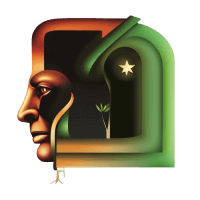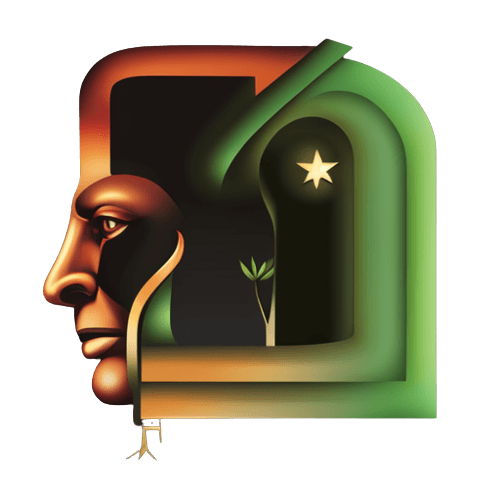Table of Contents
Introduction
In the heart of the Medieval Middle East, a remarkable artistic legacy emerged that continues to influence cultural trends to this day. Islamic art, with its intricate designs, masterful craftsmanship, and profound spiritual symbolism, transcended geographical boundaries to shape the visual landscape, architecture, and lifestyle of the region. In this exploration, we delve into the profound impact of Islamic art on the Medieval Middle East, uncovering the rich tapestry of creativity that left an indelible mark on art, culture, and history.
1. Islamic Art: A Synthesis of Spirituality and Aesthetics
Islamic art, deeply rooted in the teachings of Islam, embodies the interplay between the spiritual and the aesthetic. Through intricate patterns, calligraphy, and geometric designs, Islamic artists sought to reflect the divine order and beauty inherent in the universe. This fusion of the sacred and the aesthetic gave rise to a unique artistic language that spoke to the hearts of believers and admirers alike.
2. Architecture: The Grandeur of Islamic Design
Islamic architecture stands as a testament to the grandeur of Islamic art. From the awe-inspiring domes of mosques to the intricate arabesque motifs adorning minarets, architectural marvels of the Medieval Middle East encapsulated the principles of unity, balance, and harmony. The use of geometry, intricate tilework, and elaborate muqarnas vaulting created spaces that inspired awe and devotion.
3. Calligraphy: The Art of Divine Expression
Calligraphy, known as the “soul of Islamic art,” transformed writing into an art form of profound significance. Quranic verses and prayers were transcribed with exquisite precision, with every stroke carrying spiritual significance. Calligraphic scripts became a visual representation of the divine word, encapsulating the essence of Islamic faith.
4. Arabesque: Nature as a Source of Inspiration
Arabesque, characterized by its intricate interlacing patterns, drew inspiration from the beauty of the natural world. Leaves, flowers, and vines intertwined seamlessly, symbolizing the interconnectedness of creation and the infinite nature of God’s design. Arabesque motifs adorned everything from textiles to ceramics, creating a sense of continuity with the natural world.
5. Manuscript Illumination: Illuminating Knowledge
Islamic manuscripts were elevated to art forms through intricate illumination. Skilled artists adorned pages with gold leaf and vibrant pigments, transforming texts into visual narratives. Manuscript illumination preserved knowledge and spiritual teachings while enriching the aesthetic experience of reading.
6. Cultural Exchange: The Silk Road’s Artistic Legacy
The Silk Road facilitated a dynamic exchange of ideas, cultures, and artistic techniques. Islamic art absorbed influences from regions as diverse as Persia, India, and Central Asia. This cross-cultural pollination enriched the artistic vocabulary and contributed to the diversity of Islamic visual expressions.
7. Influence on Global Aesthetics: The Spread of Islamic Art
The impact of Islamic art extended far beyond the Middle East. As Islamic empires expanded, so did the influence of their art. Elements of Islamic design found their way into European art and architecture, leaving an indelible mark on the artistic heritage of regions as distant as Spain and India.
8. Patronage and Piety: The Intersection of Art and Faith
Islamic rulers and patrons played a crucial role in fostering artistic creativity. Mosques, madrasas, and palaces became showcases of artistic mastery, reflecting the devotion of rulers to their faith and their desire to leave a lasting legacy.
9. Resonance in Contemporary Art: Islamic Aesthetics Today
The influence of Islamic art reverberates in contemporary art, testifying to its timeless appeal. Modern artists draw inspiration from Islamic design principles, incorporating geometric patterns and calligraphy into their creations. This fusion of tradition and innovation perpetuates the legacy of Islamic art.
10. Fostering Cultural Identity: The Role of Islamic Art
Islamic art played a pivotal role in shaping cultural identity. As diverse Islamic empires flourished, they adopted and adapted artistic styles to reflect their distinct cultural nuances. The resulting artistic tapestry celebrated unity in diversity, transcending political boundaries.
11. Educational Centers and Artistry: The Madrasas’ Legacy
Madrasas, Islamic educational institutions, served as centers of learning and artistic innovation. These institutions nurtured scholars, artists, and craftsmen, fostering an environment where intellectual pursuit and artistic expression flourished.
12. Metamorphosis in Materials: Innovations in Islamic Art
Islamic artists displayed ingenuity in their use of materials. From intricate metalwork to vibrant ceramics, artistic techniques evolved, pushing the boundaries of craftsmanship. The use of geometry allowed artists to create complex patterns that transformed humble materials into works of art.
13. An Enduring Legacy of Beauty and Meaning
The impact of Islamic art on the Medieval Middle East was nothing short of transformative. It created a visual vocabulary that communicated profound spiritual truths, celebrated the beauty of the natural world, and enriched the cultural fabric of the region. As we reflect on the rich tapestry of Islamic art’s influence, several key takeaways come to light.
Preservation of Tradition: Islamic art’s enduring legacy lies in its ability to preserve and transmit tradition across generations. The meticulous craftsmanship and dedication to detail showcased in Islamic artworks underscore the importance of maintaining cultural heritage.
Unity in Diversity: One of the remarkable aspects of Islamic art is its capacity to adapt and flourish in diverse cultural contexts. The amalgamation of influences from different regions produced a harmonious artistic expression that transcended borders.
Spiritual Resonance: Islamic art’s spiritual resonance continues to inspire individuals on a profound level. The intricate patterns and symbolic representations reflect a deeper connection to the divine, reminding us of the power of art to elevate the human spirit.
Interconnectedness: Islamic art’s influence on global aesthetics underscores the interconnected nature of artistic expressions. Elements of Islamic design can be traced in art forms worldwide, highlighting the global exchange of ideas and inspirations.
Continued Reverence: Contemporary artists and designers pay homage to Islamic art’s legacy by incorporating its elements into their creations. This ongoing reverence serves as a testament to the timeless allure of Islamic aesthetics.
Educational Legacy: The establishment of educational centers in the form of madrasas demonstrated the symbiotic relationship between artistic expression and intellectual growth. These centers of learning nurtured a generation of artists, scholars, and visionaries.
Conclusion: An Enduring Legacy of Beauty and Meaning
The impact of Islamic art on the Medieval Middle East was nothing short of transformative. It created a visual vocabulary that communicated profound spiritual truths, celebrated the beauty of the natural world, and enriched the cultural fabric of the region
In conclusion, Islamic art’s influence on the Medieval Middle East was a phenomenon of exceptional depth and breadth. Through its aesthetic brilliance, spiritual depth, and cultural resonance, Islamic art became a vessel of expression for faith, beauty, and identity. Its impact on cultural trends echoes through time, reminding us that art is not only a reflection of history but a force that shapes the course of civilization.



